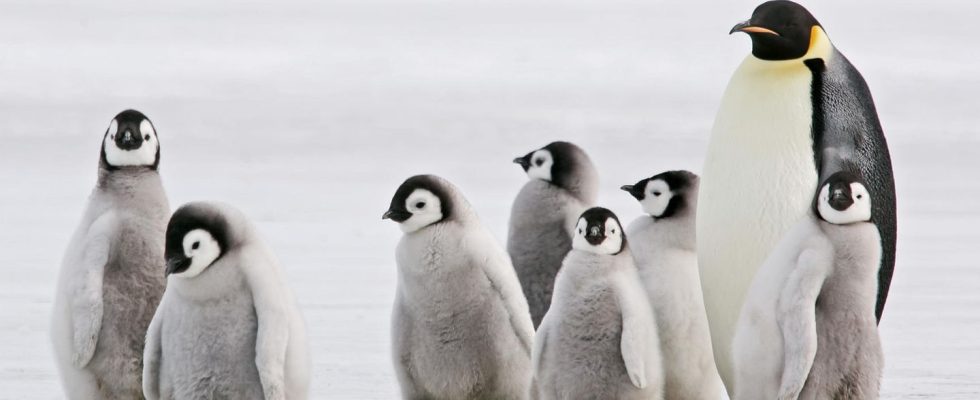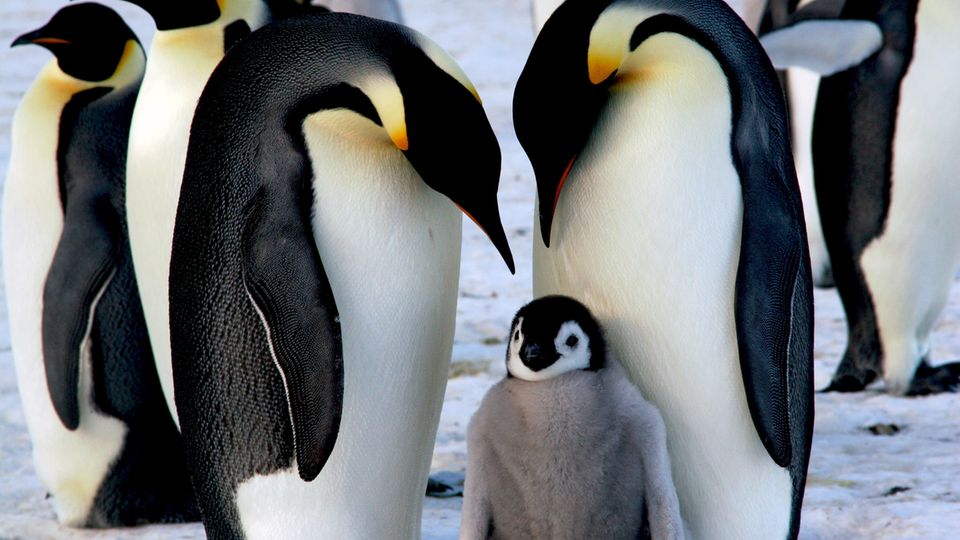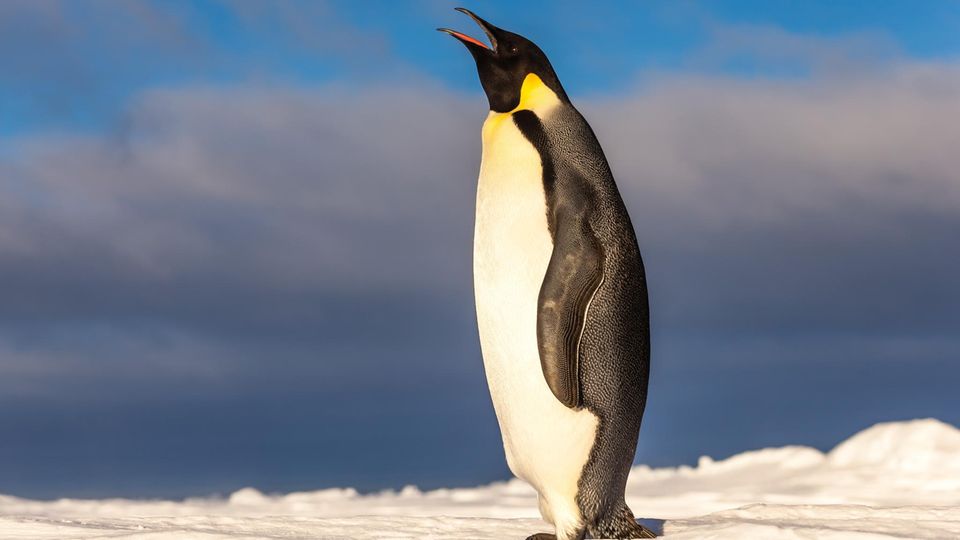Bird flu at the South Pole
Can vaccination protect penguins?
Migratory birds are said to have brought the deadly bird flu pathogen from South America to Antarctica. Researchers are now worried about the millions of penguins living there.
© Keith Szafranski/Getty Images
Now that deadly bird flu has arrived on the penguin continent, researchers are wondering how they can protect the animals. There is a vaccination – but there are also many problems.
The deadly strain of the H5N1 bird flu virus has arrived in the Arctic. Having already affected poultry farms and wild bird flocks around the world, infected mammals and even killed a polar bear, it now threatens millions of penguins who have probably never come into contact with this virus.
Eight of the world’s 17 penguin species live in Antarctica and the sub-Antarctic region. The fact that the flightless birds live in densely packed large colonies makes them particularly vulnerable. A virus could spread here in record time and cause devastating damage. The timing couldn’t be worse because the penguins will start laying eggs in just a few weeks.
Collect dead animals
However, scientists can’t do much more than wait at the moment. “We currently see no preventive options,” says Professor Timm Harder, head of the National Reference Laboratory for Avian Influenza at the Friedrich Loeffler Institute (FLI) near Greifswald. The virus is introduced via bird species that can fly, whose range can cover many thousands of square kilometers. How can we prevent penguins from coming into contact with infected material? To ensure that people do not introduce the virus, there have been stricter rules for several months now, for example for scientists who work at research stations. This includes meticulous disinfection of clothing and equipment as well as protection zones around endangered animal colonies.
In the North Sea and the North Atlantic, collection campaigns for dead birds have also proven successful. This “made it possible to increase the survival rate of the animals in the entire colony,” says Harder. However, this is likely to be difficult in Antarctica.
When bird flu vaccines could protect penguins
After all, there are vaccines that could also protect penguins. They “must be administered to each individual animal in at least two injections three to six weeks apart.” This can hardly be done in the wild, “and certainly not in the Antarctic environment,” says Harder. Even the capture of the animals would lead to “massive impairments, possibly even to deaths due to capture”. But the situation is different for animals in captivity: “This possibility does exist in zoos and wild bird sanctuaries where penguins are kept.” Researchers are also already working on vaccines that may require just one dose.
A disadvantage of vaccination, however, is that vaccinated animals cannot be easily distinguished from infected animals because both produce antibodies against the virus. In addition, not every vaccination protects against infection. This means that even a vaccinated animal could possibly pass on the virus.
It’s not just penguins that are threatened
Protecting the animals is also so important because penguins are not only threatened by bird flu, but also by climate change. Last year, British researchers published a study that estimated that 90 percent of all emperor penguin colonies that rely on Antarctica’s large ice areas will have disappeared by the end of the century if global warming is not curbed.
But scientists are also worried about other animals. “On some of the Antarctic and sub-Antarctic islands there are species that only occur on these islands, and only in small numbers, in the hundreds or thousands,” says Thijs Kuiken of Erasmus University Rotterdam in the Netherlands. As of 2023, the brutal 2.3.4.4b branch virus has killed at least 600,000 birds and 50,000 mammals in South America alone. Entire populations could disappear in Antarctica.




